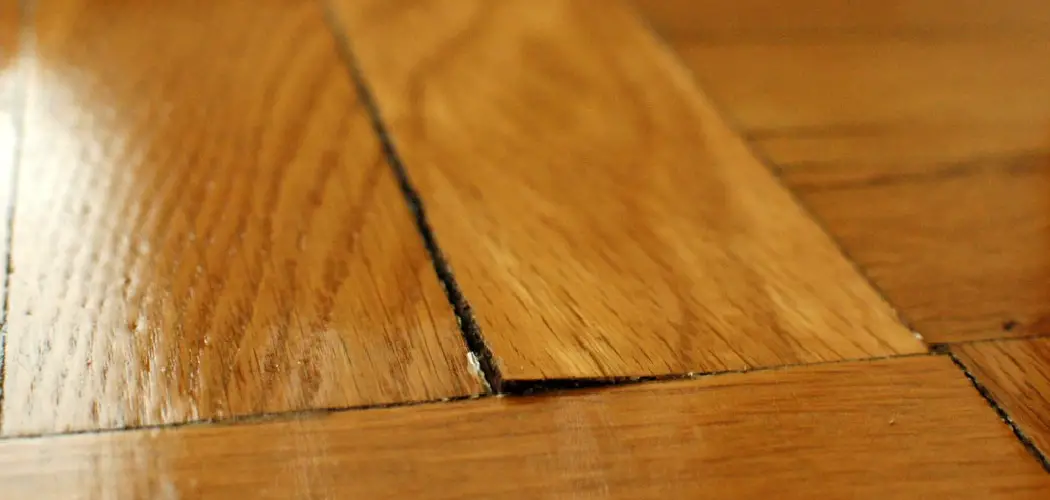If you’ve ever watched in horror as water spills onto your beautiful polished wooden furniture, you know how devastating it can be when wood becomes water-damaged. Left unchecked, this type of damage can ruin the structural integrity and look of your piece. But don’t despair; with a little knowledge and effort, it is possible to repair most forms of water damaged wood veneer – even if the results aren’t absolutely perfect!
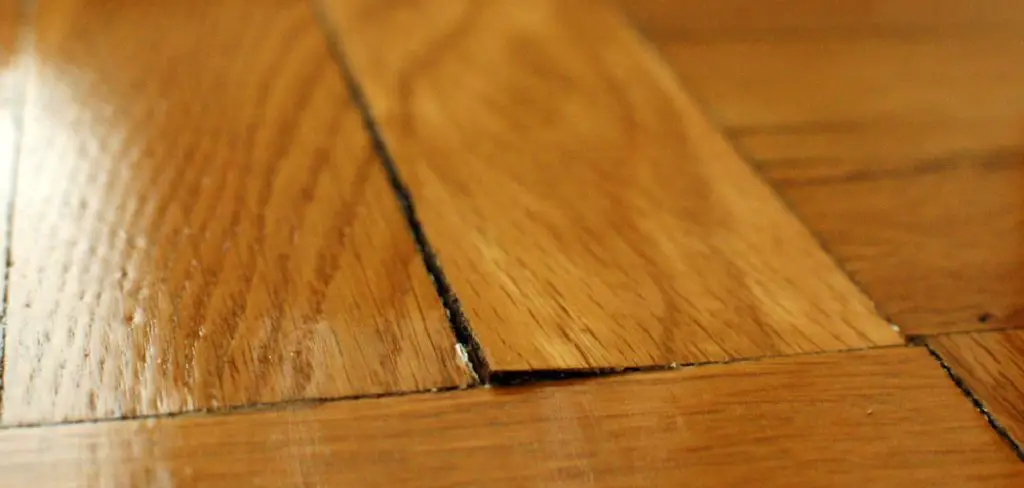
In this post on how to repair water damaged wood veneer’ll go over some steps for repairs that are effective and easy to do at home. Don’t throw out that beloved footstool just yet; you may find yourself surprised by how quickly and easily repairs can restore your wood veneer back to perfection!
What is Wood Veneer?
Before we get started, let’s take a quick look at what wood veneer actually is. Wood veneer is a thin slice of natural wood that is adhered to the surface of furniture or other objects to give it the appearance of solid wood.
It can be made from many different types of wood and comes in many thicknesses, grains, and colors. Veneers are used on both solid wood pieces and cheaper materials like particleboard. It is important to know what type of veneer your furniture has as different materials may require slightly different repair techniques.
Needed Tools and Materials
Before attempting any repair, it is important to gather all the necessary tools and materials. Keep in mind that these may vary depending on the type of damage you are dealing with. Some common tools and materials often used for repairing water damaged wood veneer include:
- Sandpaper (Various Grits)
- Wood Glue
- Putty Knife
- Clamps
- A Clean Cloth or Sponge
- Veneer Tape or Iron-on Veneer Patch
9 Easy Step-by-step Guidelines on How to Repair Water Damaged Wood Veneer
Step 1: Assess the Damage
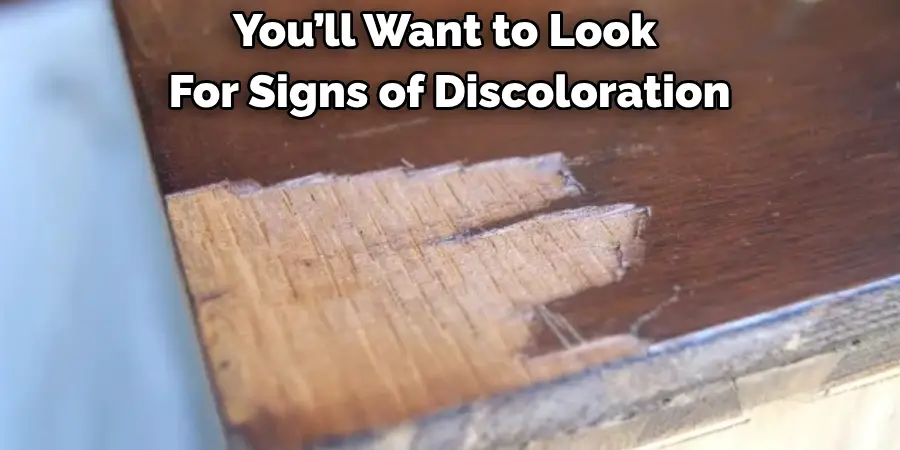
Before you begin any repairs, carefully assess the damage to determine how extensive it is. This will help you determine the best course of action and whether or not professional assistance may be needed. You’ll want to look for signs of discoloration, bubbling or warping in the veneer, and any cracks or breaks.
Step 2: Remove the Damaged Veneer
If the damage is minor and only affects a small area, you may be able to simply remove the damaged section. Use a sandpaper or a putty knife to carefully peel away the damaged veneer until you reach a smooth surface. If the damage is more extensive, you may need to remove the entire veneer from the piece.
Step 3: Sand Down any Raised Edges
If there are any raised edges or bumps where the damaged veneer has lifted away, use sandpaper to gently smooth them down. This will create a flat and even surface for your repair work. You can start with a rough grit sandpaper and gradually move to finer grits for a smoother finish. It is important to sand in the direction of the wood grain to avoid causing any further damage. But be careful not to sand too much as you may damage the underlying wood.
Step 4: Clean and Dry the Surface
Using a clean cloth or sponge, wipe down the exposed surface of the furniture with warm water. This will help remove any dirt or grime that could prevent your repair materials from adhering properly. Be sure to dry the surface completely before moving on to the next step. This will help the adhesive bond better to the wood.
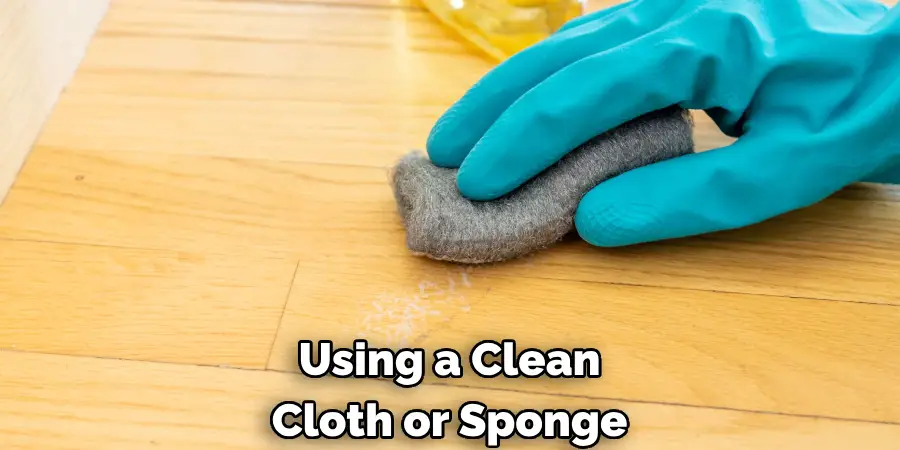
Step 5: Reapply Wood Glue
If you are dealing with a small area of damage, apply a small amount of wood glue onto the exposed surface and spread it evenly with a putty knife. If the damaged area is larger or more extensive, you may need to use clamps to hold the veneer in place while the glue dries. Be sure to follow any instructions on your specific type of wood glue for best results.
Step 6: Apply Pressure
Use a clamp or heavy item to apply pressure on the repaired area for at least 24 hours to ensure the veneer adheres properly. This will help prevent any bubbling or warping in your repair work. If you are using veneer tape or an iron-on patch, follow the instructions on the packaging for best results. It may also be helpful to use a damp cloth or sponge to remove any excess adhesive that may have squeezed out from under the veneer.
Step 7: Trim any Excess Veneer
Once the glue has dried and set, use a sharp knife to carefully trim away any excess veneer. This will help create a smooth transition between the repaired area and the rest of the piece. Be sure to cut at a slight angle to create a beveled edge for a more seamless finish. This step may not be necessary if you used veneer tape or an iron-on patch. However, it is still important to trim off any excess material for a neater look.
Step 8: Sand and Finish
After the glue has fully dried, use sandpaper to gently smooth out any rough edges and blend the repair into the rest of the piece. You may also want to refinish or polish the wood surface as needed to match the rest of your furniture. It is important to be careful not to sand too much or you may damage the repaired area.
Step 9: Prevent Future Damage
To avoid any future water damage, it is important to regularly clean and maintain your wooden furniture. Wipe up spills immediately and use coasters or placemats under glasses and dishes. You can also consider using a protective sealant on your wood veneer for added protection against water damage. And remember, the sooner you catch and repair water damage, the easier it will be to fix it!
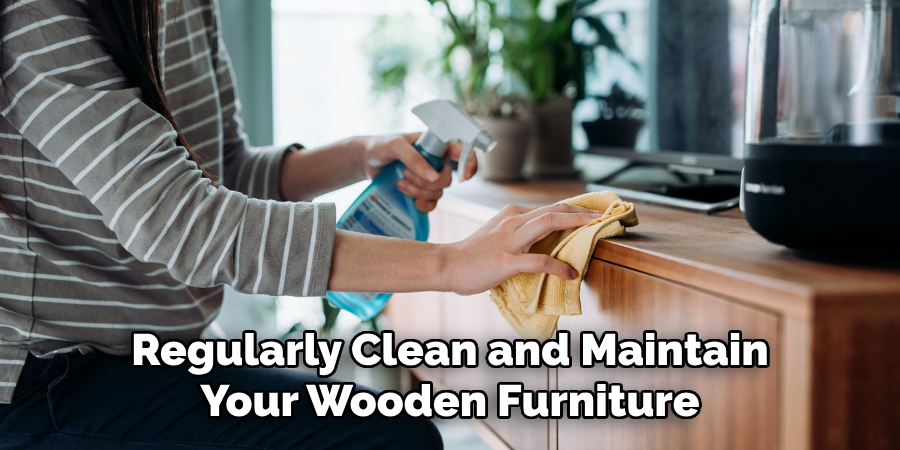
Following these simple steps on how to repair water damaged wood veneer, you can easily repair water-damaged wood veneer and restore your furniture to its former beauty. Remember to always take your time and be gentle with the process to avoid causing any additional damage.
And don’t be afraid to seek professional help if needed. With a little patience and effort, your wood veneer furniture can look as good as new in no time! So next time, don’t be quick to throw out that water-damaged piece of furniture – try repairing it first using these helpful tips!
Do You Need to Hire Professionals?
While minor water damage to wood veneer can often be repaired at home, more extensive or severe damage may require the help of a professional. If you are unsure of your ability to repair the damage yourself or if you feel uncomfortable with any step of the process, it is always best to seek assistance from a professional furniture restorer.
They will have the necessary skills and experience to handle any repairs needed and ensure your furniture is restored properly. It may cost more upfront, but it could prevent further damage and save you money in the long run. So don’t hesitate to call in the experts if needed! Your beautifully restored furniture will thank you for it.
Frequently Asked Questions
Q: How Can I Tell if My Wood Veneer Has Water Damage?
A: Some signs of water damage on the wood veneer include discoloration, bubbling or warping, and cracks or breaks in the veneer. It’s important to regularly inspect your furniture for any signs of damage and address them as soon as possible.
Q: Can I Repair the damaged Veneer Without Removing It?
A: In some cases, you may be able to repair the damaged veneer without removing it. This is typically only possible for minor damage such as small scratches or nicks. However, if the veneer is extensively damaged or lifted away from the surface, it will need to be removed for proper repair.
Q: Can I Prevent Water Damage to My Wood Veneer?
A: While it’s impossible to completely prevent water damage, there are steps you can take to minimize the risk. Always use coasters or placemats under glasses and dishes, wipe up spills immediately, and consider using a protective sealant on your wood veneer for added protection. Regularly cleaning and maintaining your furniture can also help prevent water damage.
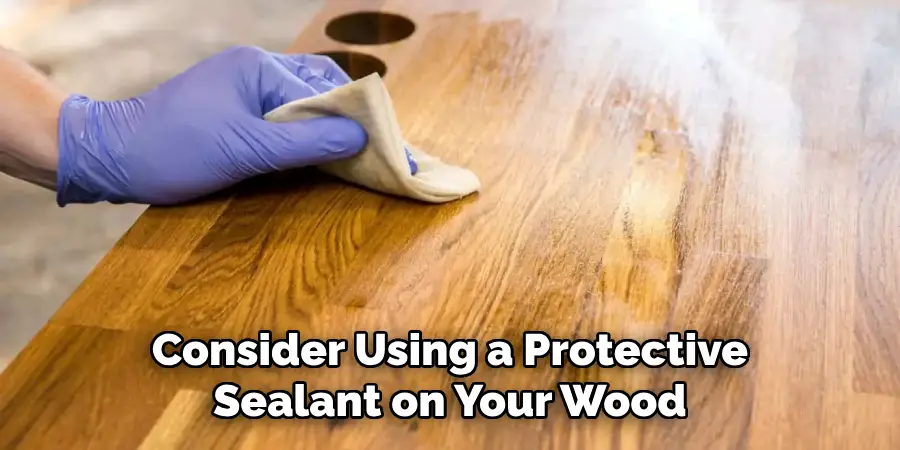
Conclusion
Taking care of any water damage done to wood veneer may be a daunting task, yet the outcomes of following these instructions and focusing on prevention can save you time and money in the future. Repairing water damaged wood veneer is possible when done correctly thanks to the home improvement supplies that are available today. Remember, prevention is key and by taking simple steps you can avoid having to make a more time-consuming fix down the road.
Plus, who doesn’t love a good DIY project? So go ahead, roll up your sleeves and take the plunge into giving your wood veneer decades of renewed life. Get started now on how to repair water damaged wood veneer.

